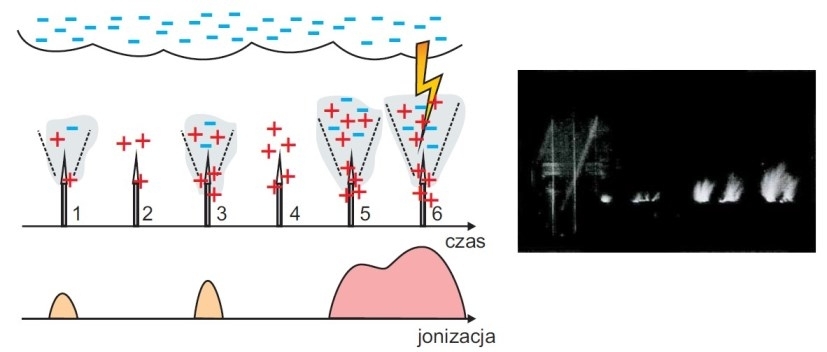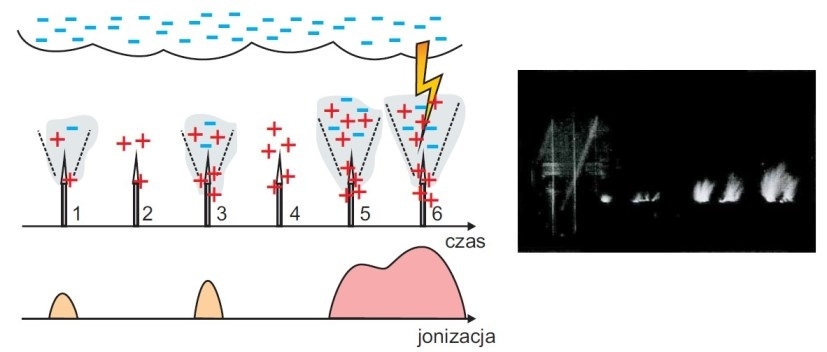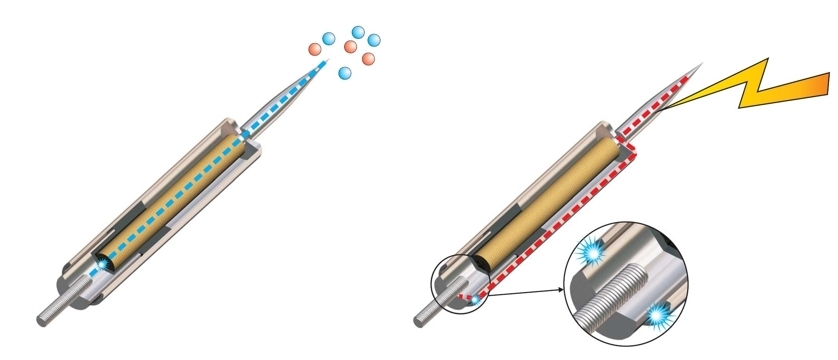The specificity of the operation of a GROMOSTAR lightning conductor with early leader emission results from the analysis of physical phenomena occurring during lightning.
In storm conditions, there is a strong increase in electric field strength. Metal blades and semiconductor components become a source of bottom-up leaders developing towards the forefront of a descending lightning bolt. The GROMOSTAR lightning conductor with early leader emission is designed to create a bottom-up leader earlier than the other elements in its protection area.

Principle of ordinary lightning rods
In ordinary lightning rods, air ionization is not a continuous process, this results from the fact that a normally charged lightning rod normally "sucks" negative charges from the space surrounding it, the positive charge cloud remaining above the blade "masks" the presence of the blade. As the electric field builds up (the leader is approaching the ground), these breaks get shorter, continuous ionization occurs and a bottom-up leader is created which will connect with the leader going down from the cloud.

1. the first initial ionization, 2. masking effect (no ionization), 3. the next ionization, 4. masking effect, 5. the development of a bottom-up leader, 6. discharge
The operating principle of GROMOSTAR lightning protection
Under normal weather conditions, the GROMOSTAR lightning conductor is a passive element with the same potential as the ground. In stormy conditions, while the leader of the lightning discharge descends from the cloud towards the ground, there is a sharp increase in the electric field around this leader's forefront. In GROMOSTAR lightning rods, the ionization process begins similarly to a normal blade, i.e. negative ions are sucked in by a positively charged lightning rod (electric current rises and falls). When the current decreases, the internal system of the lightning rod "opposes this phenomenon" by creating an additional electric field around the blade (the electric field covers a larger space which allows the capture of new negative charges). Continuous, increasing ionization causes an earlier bottom-up leader.

1. initial ionization, 2., 3., 4. due to the decrease in current, voltage is induced in the initiating system of the lightning rod to maintain the continuity of this current. 5. development of a bottom-up leader, 6. discharge
Electrical charges accumulate on the outer sheath and the lightning conductor blade and the electrical potential of the outer sheath increases in relation to the lightning conductor base with earth potential.

FIRST PHASE
SECOND PHASE
The discharge current received by the GROMOSTAR lightning conductor will not damage it due to the technical solution used.